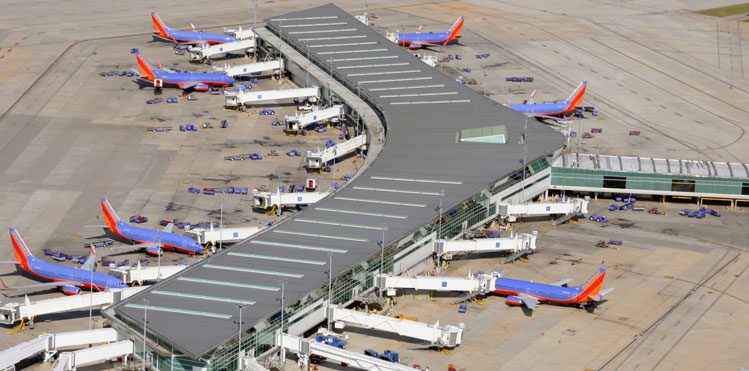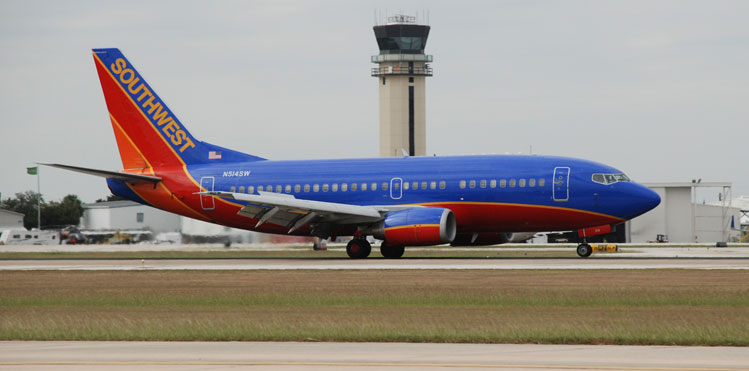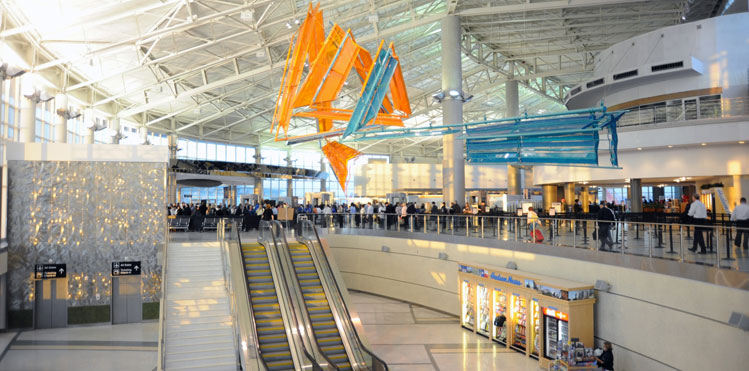
Perry Miller, General Manager, Houston William P. Hobby Airport: “Re-establishing international service at Hobby is an initiative that has been in the works for years. Southwest Airlines initiated the idea of a regional international facility at Hobby Airport and the Houston Airport System welcomed the idea of an opportunity to expand that service and enhance competition.”
The first international flight to Houston William P. Hobby Airport since 1969 landed on 7 March 2015. The inaugural Southwest Airlines flight took off from Queen Beatrix International Airport in Oranjestad, Aruba, touching down in Houston later that day, and kicked off the project initiated by Southwest Airlines and the City of Houston to continue growth of international passengers coming into Houston Airport System commercial airports.
In December of last year, Southwest Airlines announced a service expansion at Hobby Airport, marking the start of a new initiative to re-establish international services. The expansion will include a new $156 million (€137m) five-gate international concourse, which is currently under construction, as well as the addition of a Federal Inspections Services (FIS) facility to assist U.S. Customs and Border Protection (US CBP) screening and baggage processing.
Upon the opening of the new facility Southwest plans to serve six locations in South America, including four destinations in Mexico – Cancun, Puerto Vallerta, Los Cabos and Mexico City, as well as flights to Belize City, Belize, and San Jose, Costa Rica. The new facility will also be accompanied by infrastructure improvements to the surrounding area, including a new parking garage, roadway improvements and a central utility plant.

The initiative to re-establish international connections to Houston William P. Hobby Airport is being pioneered in partnership with Southwest Airlines, and the construction of a $156 million (€137m) infrastructure expansion is currently underway.
The vision
William P. Hobby Airport General Manager Perry Miller explained the vision behind the development. “The project grew out of the increasing demand for international travel out of the Houston Airport System’s airports, and the city’s growing footprint as a global destination for business and leisure travel,” he said. In 2014 a record 9.8 million international passengers travelled through George Bush Intercontinental Airport alone, and the new facility at William P. Hobby is set to enhance that growth even further.

Upon the opening of the new facility Southwest plans to serve six locations in South America, including four destinations in Mexico – Cancun, Puerto Vallerta, Los Cabos and Mexico City, as well as flights to Belize City, Belize, and San Jose, Costa Rica.
Miller also expanded on the strategic motivation for initiating the project: “An increased level of competition will expand the choices in carriers, destinations and fares for Houston’s international travellers. This is another step in the Airport System’s continued growth in the international market.” Houston will soon become the only city in North America to offer services to all six inhabited continents when, in December 2015, Air New Zealand launches service to the city. This will greatly boost Houston’s reputation as a global destination.
A brand new facility
The new $156 million (€137m) terminal will span approximately 280,000sq ft, and is set to feature five new gates for international flights. Miller also stated that there is room to expand to 12 gates, if growth should demand it. Each gate will be able to accommodate Boeing 737 and A3180-320 aircraft. Southwest Airlines is said to have “preferential” designation on four of the initial gates, while the remaining gate will be available for other interested carriers. Miller established, meanwhile, that the new FIS facility will be capable of processing 400 to 800 arriving passengers during peak hours. The facility will feature 16 passport inspection stations and three international baggage claim devices.

The new $156 million terminal will span approximately 280,000sq ft and is set to feature five new gates for international flights. Each gate will be able to accommodate Boeing 737 and A3180-320 aircraft.
Regarding passenger experience, Miller said: “The new concourse and FIS facility will make international travel incredibly convenient.” He added that the city council also approved the purchase of 14 automated passport control kiosks for the airport and that the new technology, in collaboration with the Global Entry Program, should significantly reduce the length of time required to clear the US CBP processing steps required.
Miller emphasised that “no taxpayer dollars were used” in the development of the project, with funding provided entirely by Southwest Airlines, but the city will invest in surrounding infrastructure improvements including the new $55 million (€48m) 3,000-space parking garage.
The impact of the development
With its close proximity to the city, William P. Hobby Airport is already a convenient gateway for travellers, but Miller believes establishing international air service at Hobby will benefit Houston passengers even further by boosting the local economy, increasing competition and strengthening ties with Latin America. “Houston’s connection with Mexico already is very strong,” Miller commented, “and even before this new facility opens, through service at Bush Airport, Houston Airport System flies to more Mexican destinations than any other US market.”
Miller also believes the development of the new terminal will markedly increase travellers to the region and greatly increase the region’s economy. He referred to two economic studies commissioned by Houston Airports and carried out by aviation industry experts, claiming: “International air service at Hobby is projected to eventually generate an additional one million passengers to, from and through Houston annually, creating more than 10,000 jobs and generating an annual economic impact of more than $1.6 billion (€1.4bn).”







